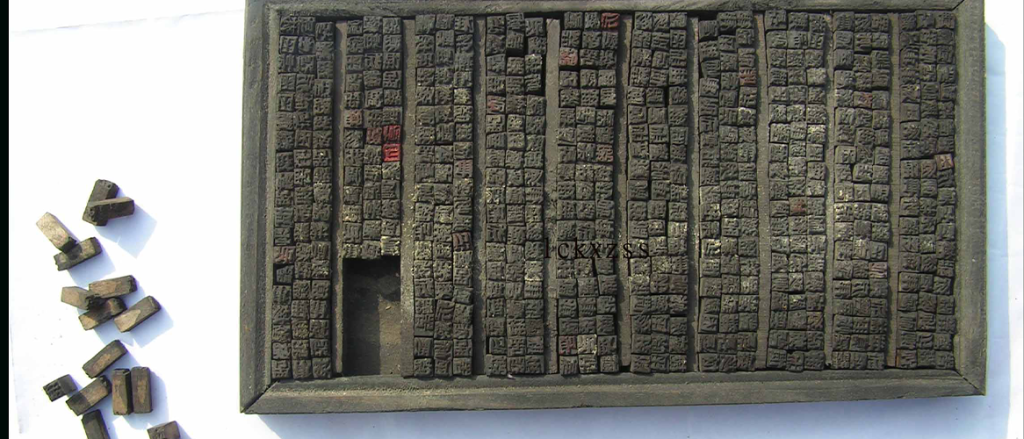To this day, it is unknown when the first printing press was invented. The oldest known printed text originated in China during the first millennium A.D.
In AD 175, the emperor of China wanted to be sure Confucianism (also known as Ruism, which describes Chinese traditions, philosophy, religion and humanistic beliefs, governing styles, and simple ways of life) was written in stone. Instead of writing, the Confucian scholars simply laid out sheets of paper on engraved slabs and rubbed them with charcoal. This practice soon became known as brass-rubbing. The Confucian scholars are the first to introduce the transfer of inks. It was not the Confucians who made the breakthrough in printing to paper, but the Buddhists.
The achievement of the Buddhists in East Asia is the world’s earliest known printed document: a sutra (religious document) on a single sheet of paper.
Book printing from China
A scroll 16 feet long and 12 inches wide was discovered in a cave Dunhuang China in the year 1899. The sheets of paper that made up the scroll were glued together at the edges. This scroll is now known as the Diamond Sutra, which is acknowledged as the oldest printed book, dating back to 868 AD. The book has text and many very detailed images, like the one below.
Through the 9th to 11th centuries, shapes were printed by cutting rounded characters using wood cuts for both text and images. Printing from wood blocks was a laborious process, which led to the introduction of movable type.
Six centuries after these inventions were created in the East, this method of printing came to Europe. Just like the method used in Asian countries, Europeans printed images simply by laying a piece of paper on a carved ink block and rubbing it to transfer the ink. Pilgrims would purchase cards with holy images printed by this method.
Sometime between 1439 and 1457, Gutenberg invented the first known printing press, which enabled him to master the complex stages in the manufacturing of individual pieces of type. This invention brought the printing press to Europe.
In 970, China was the first country to create paper currency using a printing press. During Marco Polo’s travels to China he was intrigued by the quality of print.
The book printing process has dramatically changed throughout the centuries. In an IPA report back in 2015 on the leading book markets, it was reported that China published 18% of the total, following the USA’s 20%. This does not include self-published books.
PRC Book Printing has offered book printing services in China for over 10+ years, offering economical pricing and superior book printing quality, along with transparent communications. Contacting a book printer in China directly may result in receiving a product that was not interpreted clearly.
Contact PRC Book Printing at 888.659.8320 or email info@prcbookprinting.com to learn more about your book project!

